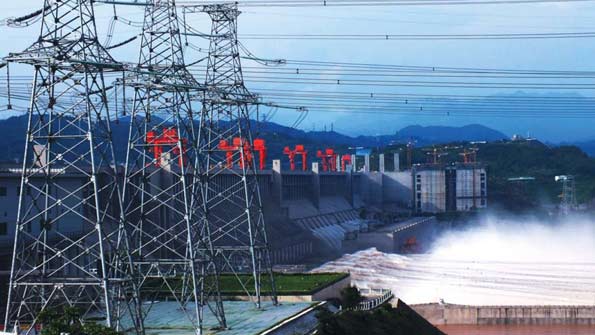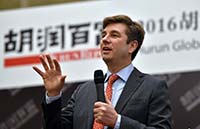

|
 |
|
The Three Georges Dam project in Yichang, Hubei province, is the world's biggest producer of hydropower. Hydro-electic generation now meets 17 percent of the country's power demand. [Liu Junfeng/China Daily] |
Global warming is not only an environmental issue - it is complicated by political and economic elements. A cap-and-trade system that combines policy and market forces can be adopted as an innovative approach to cost effectively address the global warming challenge.
In the EU, Australia, New Zealand, California of the United States, and more recently South Korea, carbon is rising as a new "commodity". China is about to take its first step to reduce emissions of greenhouse gases by embracing the market.
According to its 12th Five-Year Plan (2011-15), China is determined to cut its nationwide carbon intensity by 17 percent by 2015.
The ambitious policy creates a demand from emitters for carbon emission rights. But demand itself does not ensure that the market will price carbon efficiently. Just like other commodity markets, a reliable price discovery process depends on a truly open and transparent marketplace with liquidity.
It takes time and effort to nurture liquidity in a fledging carbon market. As the most recent emerging carbon market, California could be a good reference for China.
The California cap-and-trade program will not start until next year, but a futures market was launched in 2011 by the Intercontinental Exchange Inc.

The products provided an early price signal and risk management tools for participants well before the program's first allowance auction on Nov 14. The experience from Europe and California establishes a practical example for China to see how well-developed derivative markets can bring liquidity.
Unlike state or regional markets, China has the opportunity to benefit from scale. Though only seven pilot regions are included in its first attempt, China could be the world's second-largest carbon market after EU.
The key question for market designers is how to really take advantage of this scale. During the trial period, policy makers should pay special attention to standardization of measurement, registration and auditing methods across the pilot areas.
Linkage of internal and external markets also promotes liquidity. Major carbon markets in the world are looking to broaden their reach.
While it is too early for China's carbon market to link with other countries, market designers should at least try to link the pilots by standardization of MRA.
China's current approach is having pilot areas following varied design plans. To establish an integrated market, China should select a single national approach.
A healthy and robust market is also an open market. Participation should not be limited to compliance entities. Other entities, like financial institutions and brokers should be welcomed.
In China, the community that today prices commodities in the futures markets will ultimately have to play a key role in carbon price discovery and risk management.
Going forward, meaningful participation from qualified international institutions will help draw the right liquidity.
As market reforms deepen, China's commodity trading sector is on its way to becoming more open.
Further market liberalization could create room for international participation in China's carbon market, drawing first-hand experience from the commodity trading markets.
The author is the Greater China managing director for Intercontinental Exchange, and chair of International Emissions Trading Association China Working Group.
 Top 10 Chinese internet companies
Top 10 Chinese internet companies
 Fun time for children at international toy expo in Beijing
Fun time for children at international toy expo in Beijing
 Huawei launches new smartphone P9 in Vietnam
Huawei launches new smartphone P9 in Vietnam
 Top 10 box office movies on China market in H1
Top 10 box office movies on China market in H1
 Woman resigned from high salary job to make notebooks
Woman resigned from high salary job to make notebooks
 Hurun publishes Global Chinese Big Philanthropy Report 2016
Hurun publishes Global Chinese Big Philanthropy Report 2016
 Top 10 new economy issues in China
Top 10 new economy issues in China
 Wetland helps preserve ecology of Dianchi Lake
Wetland helps preserve ecology of Dianchi Lake

